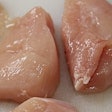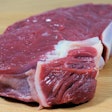In 2005, the American Egg Board funded an updated analysis of egg products, which is published in the American Egg Board's publication entitled, "Egg Products Reference Guide". The data can also be obtained from the American Egg Board (AEB) web site (http:/www.aeb.org/EggProducts/reference.html). I presented the results of this study at the March 2007 International Egg Commission meeting in London.
Nine egg products were analyzed including liquid/frozen whole eggs, liquid/frozen salted whole eggs, liquid/frozen yolk, liquid frozen sugared yolks, liquid/frozen salted yolks, liquid/frozen whites, dried whole eggs, dried yolks, and dried stabilized whites.
Samples analyzed were collected from major processors in the United States from different parts of the country. Each product included samples from three different processors. The samples included three different lots, which were pooled. Egg products were analyzed for proximate composition, cholesterol, vitamins, minerals, fatty acids, and amino acids. Egg chemistry data including pH, fat, protein, ash, solids, and free glucose were also presented.
Moisture, Protein
With respect to proximate analyses, moisture and protein content was quite comparable to previously reported values. Total fat was determined rather than total lipids. Total fat is defined as the quantitated fatty acids expressed as triglycerides. For labeling purposes, the U.S. Food and Drug Administration requires reporting total fat. (21 Code of Federal Regulations 101.9). Previous analyses reported total lipids, which includes phospholipids and cholesterol. Thus, total fat of yolk for example will be about 3 percent lower than total lipids (AOAC acid hydrolysis method).
Cholesterol content of whole egg and yolk was similar to that reported from previous analyses. Elkin, in 2007 (World's Poultry Science 63: no. 1, 5-31) reviewed factors affecting yolk cholesterol. He indicated that feeding reductase inhibitors (statins) to laying hens could reduce as much as 46 percent. However, there were concerns with the effect on nutrient composition and potential transfer of drugs to the egg. Froning et al., 1990 (J. of Food Science 55-98) reported that two-thirds of the cholesterol could be extracted using supercritical carbon dioxide extraction, but costs have been found to be excessive. Therefore, lowering of cholesterol in the egg by various approaches has not been practical. Since dietary cholesterol has not significantly affected heart disease, the cholesterol issue has become less important.
Fatty acid composition was observed to be comparable to previous reported data with a 1.8 ratio of unsaturated fats to saturated fats. Egg yolk is a good source of unsaturated fats. Trans fats in egg yolk was 0.24 percent, which means egg products can be labeled 0 percent trans fats.
Vitamin content was found to be quite uniform among all processors. Lutein and zeaxanthin are two pigments that have been found to be important for preventing macular degeneration. Lutein and zeaxanthin in egg yolk have been observed to be more available than that noted from vegetables such as broccoli. Choline and folic acid, which are high in eggs, have been observed to be important for memory function and fetal brain development.
With respect to mineral content, values were again found to be quite uniform. One exception was selenium. Selenium content can vary since some areas of the United States have somewhat higher amounts of selenium in the soil. Amino acid analyses continue to show that eggs contain all of the essential amino acids needed in our diet. Eggs are used as a standard for measuring protein quality.
When considering egg chemistry, egg solids have been a continuing concern to processors. It is known that in-line systems may have a lower percent solids than off-line systems. Also, age of the hen, strain and storage may affect egg solids.
Accurate nutrient composition of eggs is valuable for our industry. Consumers are demanding more information about the composition of the foods they consume.



.jpg?auto=format%2Ccompress&fit=crop&h=167&q=70&w=250)














